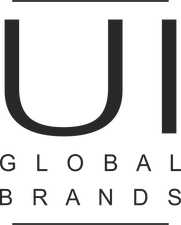![]() Do you have the extra capital needed to grow your small business or fund that next big opportunity?
Do you have the extra capital needed to grow your small business or fund that next big opportunity?
If the answer is no, the first step is to figure out what will be the best way to fund your growth — debt versus equity?
Financing debt — a business loan — requires you to borrow money that must be paid back with interest in installments over time. Equity financing requires you to trade a percentage of shares in your company with investors or venture capitalists in exchange for their funding. Which option is better? Your decision will largely depend on your financial situation, how fast you need funding, and how much capital you need.
Which option is better? That decision will largely depend on your financial situation, how fast you need funding, and how much capital you need.
According to Babson’s State of Small Business in America 2016 report, the top reason small business owners seek funding is to use it for working capital and/or improved cash flow. The report also stated, “Training around access to capital for the business owner needs to include not only understanding their own financial statements and business model, but also the business terms and products offered by the different funding sources. When a business owner understands the rates, credit criteria, and [the] process of a capital source, they are better equipped to assess the fit of any particular capital source with their particular financing needs.”
We recently asked Goldman Sachs 10,000 Small Businesses Dallas alumni who have successfully obtained capital what funding routes they took and the reasoning behind it. Here’s what they had to say.
FUNDING SOURCES
When weighing funding options, Big Hit Creative Group, Inc. considered a business loan and a line of credit. Upon the advice of their Frost Bank advisor, they decided to go with a line of credit. This choice allowed the company more flexibility to use only the amount they needed, so as not to be locked into a long-term loan that they would be required to pay whether they used the money or not.

“Our initial plan was to use the capital to offset payroll, but [we] found it more beneficial as a means to support [the] cost of goods,” said Glenn Bradley, creative director of Big Hit Creative Group, Inc. “The credit line low-interest rate saved us money as opposed to using a company credit card, which essentially saved us money to put toward payroll.”
![]() Quincy Roberts, president of Roberts Trucking, also chose to go with a line of credit because it gave his company the option to take money out on an interim basis, as needed, to cover materials and other payables incurred on huge projects, allowing them the time and cushion needed to collect receivables from customers.
Quincy Roberts, president of Roberts Trucking, also chose to go with a line of credit because it gave his company the option to take money out on an interim basis, as needed, to cover materials and other payables incurred on huge projects, allowing them the time and cushion needed to collect receivables from customers.
Beacon Hill Preparatory Institute chose to use PeopleFund as a funding source of capital. PeopleFund provides small business loans, as well as business assistance and education to people with otherwise limited access to such resources.
![]()
“With PeopleFund, we were able to get the funding up front for a minimal upfront fee and monthly installments that were within our budget,” said Charnella Derry, president and co-founder of Beacon Hill Preparatory Institute. “Also, we did not have to discount our future receivables. They allowed us to use our future contracts as collateral. This included securing sizable multi-year contracts and other streams of revenue.”
The capital in this scenario was once again used for ‘gap funding’ to service the significant increase in students Beacon Hill was contracted to serve to grow their business. “Since our major customers pay 30 days after service is performed, we needed upfront capital to kick off the school year. This included payroll, curriculum, program costs, etc.,” Derry said.
“Since our major customers pay 30 days after service is performed, we needed upfront capital to kick off the school year. This included payroll, curriculum, program costs, [and more],” Derry said.

UI Global Brands LLC president Psyche Terry opted to go in a totally different direction. She sought the help of private investors to relaunch a division of her company. Initially, she thought that using credit cards could be an option, but the credit cards had high APRs and traditional banks turned her down.
“We realized that having personal private investors was the best choice for us,” Terry shared. “We were able to work with people [who] believed in us and what we wanted to do.”
HOW TO POSITION YOUR COMPANY
Determining your best financing option is only a piece of the puzzle. Determining how to best position your business to seek the capital you need is equally as important.
Our 10,000 Small Businesses alumni were unanimous in citing the importance of having accurate financial statements, a business plan, a steady flow of cash, and most importantly, demonstrating the ability to repay the loan.

“To get a loan you need to demonstrate two things: collateral and the ability to pay back the loan,” stated Robert Ozarow, president of Empire Baking Co., whose background in investment banking helped him secure a multi-million dollar loan to purchase their building.
“I had both when I applied for my loan. I prepared historical financials and did a five-year projection. Doing so helped me demonstrate, historically, that I had the cash flow to pay back the loan. My financial projections showed I had a source of repayment and a cushion to pay it back,” he said.
“You must ask for everything you need, but to know exactly what you need requires you to develop your business plan with a level of detail closer to that of designing an air craft,” he remarked. “You need to know how many bolts you will need to buy.”

Walter Dobson, president of American Bio Source LLC, stressed the importance of not being blinded by your need or want, as well as being under prepared or not detailed enough because you are simply shooting from the hip.
If you can prove you actually know what you need — and what you need is not ‘extra’ — then you should get it.
Walter Dobson
“After getting drilled by investor prospects and bank managers and risk managers, I believe having an extremely detailed plan with vetted proven costs, such as numbers from actual vendors, is the key to getting what you want. If you can prove you actually know what you need — and what you need is not ‘extra’ — then you should get it,” Dobson said.
SUCCESS IN OBTAINING CAPITAL
What led to the success of these small business owners in getting lenders and investors to say yes to their request?
“I think we showed that we undeniably believed in our ability to be able to pay back our debt,” said Terry.
Others credited working with small business resource organizations to put together a detailed plan demonstrating how they would use and pay back the loan, in addition to showing profitability.
“I was successful at obtaining capital by showing my lender that my company is profitable,” said Roberts. “Lenders are generally in the business of making money. I am able to show through my financials that my risk level is very safe.”
Derry credits their success in obtaining a loan through PeopleFund to the North Texas Small Business Development Center and their advisor, Judith Collins.
“I believe I was successful because I had other mentors that believed in what we were doing and helped us ensure our financials were bank ready,” she said. “They helped us over the years, and when the time was right, we were ready to choose which lending agency would best help meet our need.”
ACCESS CAPITAL: TOP 10 TIPS TO POSITIONING YOURSELF
Planning is key when it comes to successfully navigating the capital environment, according to our 10,000 Small Businesses alumni. In fact, planning and doing your financial homework might be the most crucial parts in getting the resounding “yes” you are looking for.
“Don’t wait until you need capital to start looking for it,” Roberts said. “It’s best to start working on your future capital needs before it becomes an emergency.”
When it comes to accessing capital in Dallas-Fort Worth, our alumni recommend these “top ten” tips to position your business to access capital.
- Go beyond running your business like a worker bee: Run it like a business owner.
- Don’t wait until you need access to capital to prepare for it.
- Get your financials together. Accurate financials are crucial to determining your need.
- Connect with a banker and/or advisor in advance to see if your financials are banker-ready.
- Make sure your personal credit is great. It establishes a track record and a level of trust.
- Create a steady stream of income.
- Pay your vendors and invoices on time.
- Clear up any issues or gaps in your financials such as past due or delinquent payments.
- Have a detailed plan that clearly outlines your loan ask: what the funding will be used for, the cost, and the forecast when you will begin to make money.
- Demonstrate you have the profitability and/or the collateral to back the loan.
Updated Sept. 1, 2017






























